
Which of the following is the functional group of ether?
A.
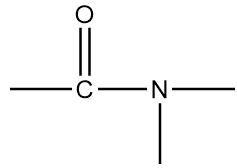
B.

C. $ - O - $
D. None of the above


Answer
500.4k+ views
Hint :A specific group of atoms or bonds within an organic compound which is responsible for the specific and characteristic chemical reactions of that compound is termed as a functional group. These groups are used to differentiate similar compounds from each other.
Complete Step By Step Answer:
A functional group in an organic compound plays a significant role in controlling and directing organic reactions. The presence of these groups allows for higher specificity and reactivity of an organic compound. Among given options, the given structures represent following functional groups:
Structure-A:
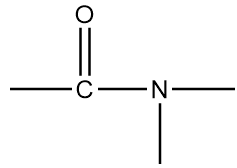
The name of this functional group is amide group in which a carbonyl group is covalently bonded to azide ion $(NH_2^ - )$ or its derivative $(NR_2^ - )$. An example of a compound containing amide group is as follows:
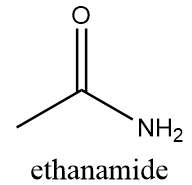
Structure-B:
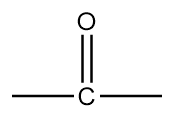
The name of this functional group is ketone in which a carbonyl group is covalently bonded with two alkyl groups which can either be same or different. An example of a compound containing ketone functional group is as follows:
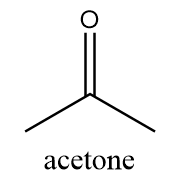
Structure-C: $ - O - $
The name of this functional group is ether in which an oxygen atom is bonded to two alkyl groups via a single bond. The alkyl groups can either be the same or different. Because of the low reactivity of ethers, these are widely used as solvents in many organic reactions. An example of a compound containing an ether as a functional group is as follows:
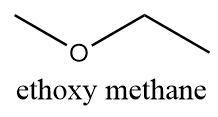
Hence, the functional group which represents ether is $ - O - $. Thus, option (C) is the correct answer.
Note :
Make sure to not to get confused between the ether and ester functional group. Although the name is similar but in ether, the oxygen atom is directly bonded to alkyl groups whereas in ester, a carbonyl group is also present within the structure.
Complete Step By Step Answer:
A functional group in an organic compound plays a significant role in controlling and directing organic reactions. The presence of these groups allows for higher specificity and reactivity of an organic compound. Among given options, the given structures represent following functional groups:
Structure-A:

The name of this functional group is amide group in which a carbonyl group is covalently bonded to azide ion $(NH_2^ - )$ or its derivative $(NR_2^ - )$. An example of a compound containing amide group is as follows:

Structure-B:

The name of this functional group is ketone in which a carbonyl group is covalently bonded with two alkyl groups which can either be same or different. An example of a compound containing ketone functional group is as follows:

Structure-C: $ - O - $
The name of this functional group is ether in which an oxygen atom is bonded to two alkyl groups via a single bond. The alkyl groups can either be the same or different. Because of the low reactivity of ethers, these are widely used as solvents in many organic reactions. An example of a compound containing an ether as a functional group is as follows:

Hence, the functional group which represents ether is $ - O - $. Thus, option (C) is the correct answer.
Note :
Make sure to not to get confused between the ether and ester functional group. Although the name is similar but in ether, the oxygen atom is directly bonded to alkyl groups whereas in ester, a carbonyl group is also present within the structure.
Recently Updated Pages
Why are manures considered better than fertilizers class 11 biology CBSE

Find the coordinates of the midpoint of the line segment class 11 maths CBSE

Distinguish between static friction limiting friction class 11 physics CBSE

The Chairman of the constituent Assembly was A Jawaharlal class 11 social science CBSE

The first National Commission on Labour NCL submitted class 11 social science CBSE

Number of all subshell of n + l 7 is A 4 B 5 C 6 D class 11 chemistry CBSE

Trending doubts
Differentiate between an exothermic and an endothermic class 11 chemistry CBSE

10 examples of friction in our daily life

One Metric ton is equal to kg A 10000 B 1000 C 100 class 11 physics CBSE

Difference Between Prokaryotic Cells and Eukaryotic Cells

1 Quintal is equal to a 110 kg b 10 kg c 100kg d 1000 class 11 physics CBSE

State the laws of reflection of light




